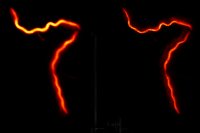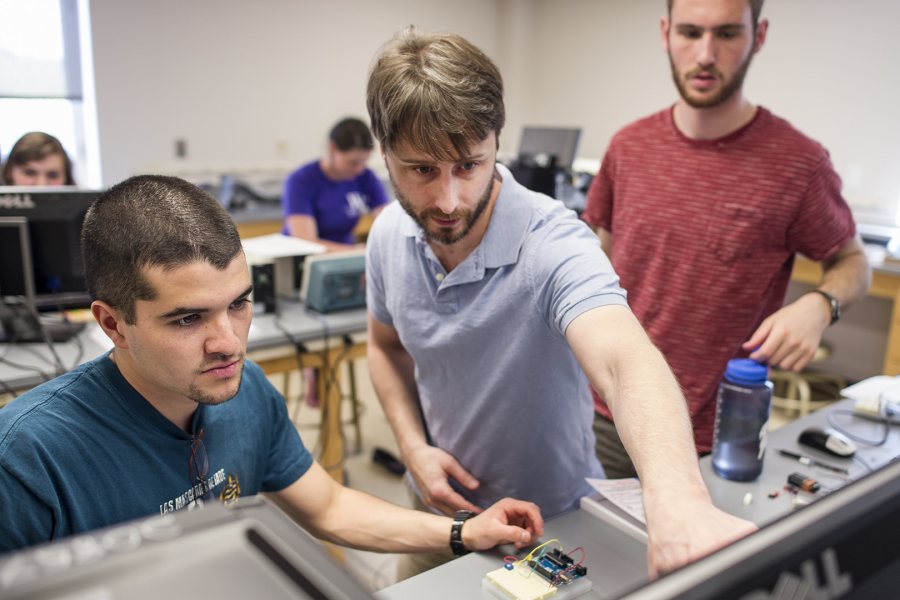
Physics professor Travis Gould nets $473,000 grant to develop new microscope
Assistant Professor of Physics Travis Gould has been awarded a $473,000 grant to develop a powerful microscope that will allow researchers to examine DNA and various proteins found in cell nuclei.
The grant, from the Maine IDeA Network of Biomedical Research Excellence (INBRE), will allow Gould to build a “super-resolution” nanoscope that will provide dual-color imaging at nanometer resolution.
This nanoscope will allow Gould, his colleagues, and students to better study and understand how genes are regulated through the organization of chromatin, the material of which chromosomes are made.

Assistant Professor of Physics Travis Gould (center) works with Armando Morales Urrutia ’16 (left) of Fraijanes, Guatemala and Daniel Paseltiner ’16 of Devon, Pa., during the Short Term course “Microcontroller Laboratory.” (Josh Kuckens/Bates College)
“Understanding how genetic material is packaged and organized in cells is important in understanding genetic diseases, many of which are believed to be linked to misfolding or mispackaging of DNA,” Gould said.
Gould’s is the latest significant grant awarded to Bates faculty who are utilizing powerful microscopes in the fields of biology, neuroscience, nanotechnology, and photophysics.
Last year, a team of professors, which included Gould, was awarded $791,480 from the National Science Foundation to purchase a state-of-the-art confocal microscope that uses lasers, computers, and optical elements to render images in thin uniform layers that can be digitally stacked into a three-dimensional representation.
The NSF and INBRE grants are a recognition that Bates is home to a cadre of professors conducting important cellular, molecular, and nanoscopic research, said Matthew Auer, vice president for academic affairs and dean of the faculty. “The fact that many faculty members can make use of the same equipment and technology is especially appealing to grantmakers,” he added.
Gould’s is the latest significant grant awarded to Bates faculty who are utilizing powerful microscopes in the fields of biology, neuroscience, nanotechnology and photophysics.
Gould’s research on chromatin requires an ability to resolve images beyond the capabilities of conventional microscopes. That means he has to build new types of microscopes for biological applications — in this case, the study of chromatin.
In its various states the length of chromatin can vary several microns down to several nanometers.
However, conventional microscopes are unable to resolve objects smaller than 200 nanometers. The nanoscope that Gould will build should provide a resolution that is roughly 10 times higher than the powerful confocal microscope the college obtained with its NSF grant.
Gould aims to utilize “stimulated emission depletion” microscopy that will exploit the on/off switching properties of certain light-emitting chemical compounds attached to the chromatin to enhance the resolution of the images.
Gould says the development of such a powerful instrument will help Bates students in several ways.
“I expect there to be research and thesis opportunities for students throughout the project centering on the optical technology and also on imaging chromatin and the subsequent data analysis,” Gould said. “The new instrument will also provide a good lab demonstration in my optics course.”


